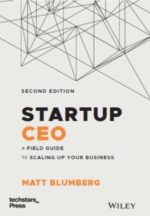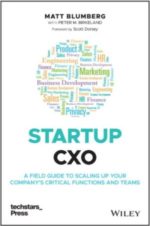Wanted! Comp Benchmark Participants, Part II
Wanted! Comp Benchmark Participants, Part II
So far, the responses to my earlier posting on organizing a comp benchmarking project are going well. We still don’t have as many as I’d hoped, but it’s only been a couple of days.
However, I did receive a comment and link that led to an email exchange with Mike DiPierro, who pointed me to another collaborate effort that’s worth looking at on the web. Although it may not be quite as customized as the one I’m hoping we can build, this group does an annual report for private company comp, one in IT and the other in Life Sciences. You can see more about it here if you’re interested in participating in their 2006 survey (but participate in ours as well!).
links for 2005-12-02
-
Good quick point of view on what makes a great employee in a startup.
Wanted! Comp Benchmark Participants
Wanted! Comp Benchmark Participants
Return Path is looking to benchmark our compensation structure with those of peer companies. We would like to organize a project where an independent consultant gathers and compiles the data from a group of 10-20 companies and shares the aggregated results with individual benchmarks back with participants (the data will be anonymous on a per-company basis).
The data we’d need from participating companies (for all positions) is: Title and summary of the job description; Base Salary; Bonus; and Location.
The criteria for "peer company" is one that is comparable in size (50-250 people), geography (not rural, at least some in NY/Chicago/SF/LA), and industry (anything tech/Internet/services).
We will act as the project manager. Participating companies will mainly just have to provide the data. The cost of the consultant will be approximately $1,000-2,000 per participating company. This is a small fraction of what a similar study would cost from one of the big HR/benefits consultancies — and should be much more targeted and useful as well.
If you are interested in participating please email us at [email protected]. VCs out there — please circulate this to your CEOs and CFOs!
Doing Well by Doing Good, Part II
Doing Well by Doing Good, Part II
At Return Path, we feel strongly that companies can and should make the world a better place in several different ways. Certainly, many companies’ core businesses do that — just look at all the breakthroughs in medicine and social services over the years brought to market by private enterprises, including my friend Raj Vinnakota, who I wrote about in part I of this series last year. But many companies, including Return Path, aren’t inherently “save the world” in nature (although some people in online marketing would have you believe that we are!), and those companies can still make a difference in the world in a few ways:
1. Organize projects in the local community for their employees to help out/work at
2. Allow employees to take a limited amount of paid time off for community service work
3. Provide matching gift programs so employees’ donations are enhanced by the company
4. Donate money or services to charitable organizations they believe in
As a relatively small company, we have to pick our battles here. We currently have a policy for #2 above that allows employees 3 days per year of paid time off for community service work. And today, we are announcing a comprehensive program for #4 above in association with the Accelerated Cure Project for Multiple Sclerosis. This choice was inspired by our long-time employee and friend Sophie Miller, who was diagnosed almost two years ago now with MS (and is doing great)!
Read the details of what we’re doing with Accelerated Cure in the full press release here.
links for 2005-11-26
-
Charlie O’Donnell from Union Square Ventures has a great post about LinkedIn, its limitations, and some things it could do to be MUCH cooler and more useful.
Not-so-Counter Cliche: Forecast Early and Often
Not-so-Counter Cliche: Forecast Early and Often
There’s no "counter" in this week’s counter cliche, although this is a cross-post to two of Fred’s recent postings. In his VC Cliche of the Week, he talks about the need for early-stage companies to forecast often, and he was nice enough to cite Return Path as his case study. I thought I’d give some color on this from our perspective here.
Forecasting is a pain, so we adopted the model of as 12-month rolling forecast with quarterly reforecasts (and correspondingly quarterly incentive comp structures) out of necessity. For early stage companies in emerging industries, there are simply too many moving parts in the business to provide enough visibility to produce an accurate 12-month budget. There are really four factors at work here:
– Investment: you make investment decisions every day in the business, and you can get pretty good over the years at predicting the return on the investment, but predicting the timing of the return can be very difficult. Products "ship" late, customer seasonality can factor in, marketing campaigns can take longer to pay back than you expect.
– Competition: you have by definition even less of an idea what competitors will do, or for that matter, when new competitors will arrive on the scene. Any competitive activity can impact pricing and lengthen sales cycles in ways that are hard to predict.
– M&A: any acquisition you make throws the entire budget into chaos both on the revenue side and the cost side.
– Recurring revenue: for any business that has a recurring revenue model, missing your numbers in a given month or quarter makes it nearly impossible to get back on track for the rest of the year since next quarter’s number depend on making this quarter’s numbers. This is what Fred calls the New York Jets syndrome – once you lose 7 games, you know you’re not getting into the playoffs.
So forecasting early and often is a great solution to this problem, and it’s a particularly effective tool to keep the team motivated. And there’s no shame in doing this. Even large public companies consistently set new guidance to Wall Street at the end of every quarter for the following quarter and remainder of the year. But it is a little bit of a pain, so I’d recommend that CEOs and CFOs who want to adopt this model follow a few practices we’ve learned over the years:
– Make sure you have an incredibly flexible Excel model that supports the process. You can’t reinvent the model four times per year. It has to be able to handle multiple scenarios with easy-to-use toggles, and it has to be able to accept "actuals" as well as forecasts (see note on comparisons below).
– Manage expectations properly with the Board and with the team. As long as everyone knows what the process is, you can avoid a lot of confusion. The critical thing here is that neither constituency should feel like the system is being gamed or that numbers are being sandbagged.
– Compare to originals. Our model produces "waterfall" comparison charts showing how a given quarter’s forecast changed over the quarters leading up to it, and then how the forecasts compared to actuals. This is important mostly to produce learnings about how to forecast better in the future.
– Plan to work your way out of the process over time. Do quarterly budgets for a year or two, then move to semi-annual budgets for a couple of years, then try moving to full-year budgets.
I think it was unintentional on his part, but Fred’s other posting today, about M&A in the Internet space, is also relevant to this topic. It’s worth looking at the graphs in the original posting, but the basic point is that the preponderance of Internet companies either get acquired early on in their life (e.g., for less than $50mm) or once they have achieved escape velocity (e.g., for more than $500mm). He says that the space in between, or "the valley" on his chart, is where a lot of solid VC-backed companies sit and where good solid returns are made. I’d just add to it that "the valley" is exactly where it’s critical to forecast early and often, as that’s where businesses are working their hardest to grow from proof of concept to escape velocity, often with limited visibility 12 months out on their budget.
Book Short: Underdog Victorious
Book Short: Underdog Victorious
The Underdog Advantage, by David Morey and Scott Miller, was a worthwhile read, though not a great book. It was a little shallow, and although I enjoyed its case studies (who doesn’t love hearing about Ben & Jerry’s, Southwest, JetBlue, Starbucks?), I didn’t feel like the authors did enough to tie the details of the success of the case study companies back to the points they made in the book.
That said, the book had some great reminders in it for companies of all sizes and stages. The main point was that successful companies always think of themselves as the underdog, the insurgent, and never get complacent. They run themselves like a political campaign, needing to win an election every single day. A lot of the tactics suggested are timeless and good to remember…things like never declare victory, always play offense, always respond to attacks, remember to communicate from the inside out, and remember to sell employees on a mision and purpose in order to make them your main ambassadors. The laundry list of tactics is the book’s greatest strength.
links for 2005-11-16
-
Jeff Jarvis on Why We’re Glad We’re New Media…good stats on all the troubles facing “old media” nowadays (box office, newspapers, music, radio, books)
-
Fred Wilson on how VCs relate to entrepreneurs vs. their limited partners. They should think of entrepreneurs as their customers, and think of LPs as shareholders.
Counter Cliche: Head Lemming
Counter Cliche: Head Lemming
Fred’s VC Cliche of the Week last week was that leadership is figuring out where everyone is going and then getting in front of them and saying “follow me.” While it’s certainly true that juming out in front of a well-organized, rapidly moving parade and becoming the grand marshal (or maybe the baton twirly person) is one path to successful leadership, CEOs do have to be careful about selecting the right parade to jump in front of for two reasons.
First, just because lots of people are going in a specific direction doesn’t mean it’s right. There’s nothing good about ending up as the Head Lemming. It just means you go over the cliff before the rest of the troops. Lots of smart people thought home delivery of a stick of gum made sense and was worth investing in, but it certainly put a kink in George Shaheen’s career.
Second, even if the parade is a good one, the organization you run might not be best equipped to take advantage of it. Again, you find yourself in the undesirable position of being the Head Lemming. Gerry Levin and Steve Case fell in love with convergence story (one of the biggest parades of the last 10 years), but in the end, Time Warner and AOL just couldn’t cope with the merger. Neither Gerry nor Steve survived the merger.
So if you’re going to follow the VC cliche and jump out in front of a crowd to lead it, make sure you select your crowd carefully.
A Typepad User, and Proud of It
A Typepad User, and Proud of It
SixApart showed huge corporate courage today when they emailed their entire blog user base, apologized (for the second or third time) for service interruptions the past month, then announced a cash remedy.
As a default, they’re giving everyone half a month of service for free. This is obviously a huge hit to the company financially and probably more of a gesture than anyone expected. But better than that, they allowed users to click through to their web site and automatically get a full month for free — or a month and a half for free — if they felt in good conscience that the service outages were more harmful to them. They also quite intelligently allowed users to click through and decline the service credit if they weren’t inconvenienced by the outages.
This is everything that customer service is supposed to be. Prompt. Proactive. Generous. Allowing customers to be in the driver seat about remedies. After a HORRENDOUS weekend of customer service gaffes by United Airlines (a story for another time), I couldn’t be more struck by the contrast. And SixApart isn’t even an employee-owned company teetering on the edge bankruptcy. Way to go, SixApart!
Hackoff – The Blook, Part II
Hackoff – The Blook, Part II
A few weeks back, I posted about a new blook (book delivered in single episodes via blog) called Hackoff.com – An Historic Murder Mystery Set in the Internet Bubble and Rubble, by Tom Evslin. A few weeks into it, and I’m hooked. It’s:
– complete and total brain candy, or mental floss as Brad calls it
– a great 2 minute break in the middle of the day (episodes are delivered once a day during the week)
– a very entertaining reminder about some of the wacky things that went on back in the Internet heyday
– a good look into some of the processes that go on behind the scenes in taking a company public
If you haven’t started the blook yet and want to give it a try, you can catch up on all of the first episodes and subscribe to the new ones here. You can also preorder a hardcover copy of the book here on Amazon.com.



